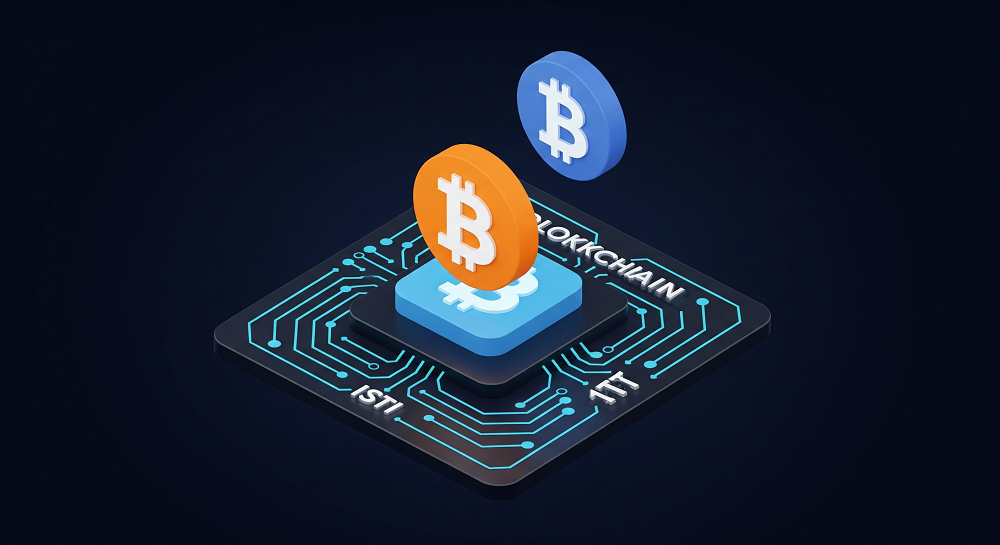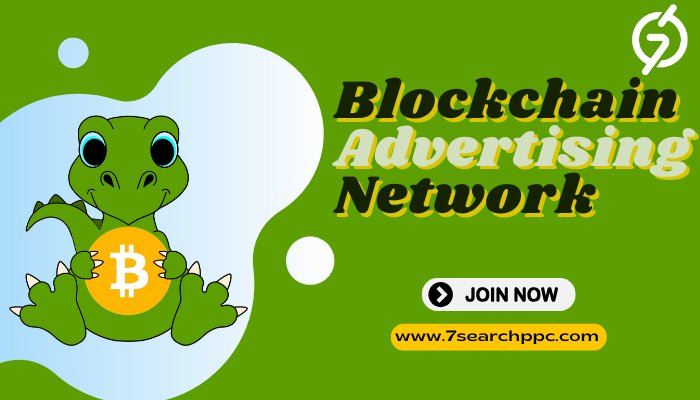How to Choose the Right Blockchain for Your Decentralized App (dApp)

Strong 8k brings an ultra-HD IPTV experience to your living room and your pocket.
Choosing the right blockchain for your decentralized application (dApp) is one of the most important decisions you’ll make in your development journey. It’s not just a matter of picking a popular network—it’s about understanding how different chains function, evaluating your use case, and balancing trade-offs between performance, security, and scalability. The growing number of blockchain protocols has made the landscape more competitive, but also more confusing for teams looking to launch a stable, effective, and scalable product. Whether you're building a DeFi platform, NFT marketplace, DAO tool, or supply chain system, your choice of blockchain will influence your entire project lifecycle.
✍️ Blockchain is reshaping supply and logistics systems worldwide. Learn how companies use blockchain technology for transparency and fraud prevention.
Why Blockchain Selection Matters for dApps
The blockchain you build on defines more than just your tech stack—it shapes your app’s user experience, fees, time to market, and even long-term relevance. dApps, by nature, rely heavily on the reliability and performance of their base protocol. Imagine deploying a feature-rich app on a congested, high-gas-fee network. Or selecting a new chain that lacks active users and liquidity. These decisions directly impact user retention, revenue flow, and the credibility of your product.
Many teams, especially those new to Web3, often rush into Ethereum because it’s well-known and widely supported. But Ethereum isn't the only option, and in many cases, it might not be the most efficient or cost-effective. Blockchain development services today offer support for a range of chains, each tailored to different needs—from high-speed gaming transactions to complex financial smart contracts. Understanding those nuances before writing a single line of code can save you from costly migrations or stalled adoption later on.
Core Factors That Define the “Right” Blockchain
When assessing which blockchain to choose, it’s critical to move beyond hype and examine some core functional attributes: transaction fees, scalability, developer tools, security, community support, and interoperability. These are the mechanics that determine how well your dApp will run, scale, and interact with other parts of the Web3 ecosystem.
Transaction Costs and Speed
Gas fees are a real pain point for many users and developers. Ethereum, for example, can experience heavy congestion and unpredictable fees, especially during high traffic. If your dApp relies on microtransactions or real-time updates—think games, loyalty apps, or social tools—you need a chain that offers low, stable fees with fast finality. This is where chains like Solana, Avalanche, and Polygon gain traction. Their cost structure can support higher-volume use without pricing users out. Blockchain development companies often evaluate expected transaction volumes early in the planning phase to determine if a Layer 1 or Layer 2 network is better suited.
Smart Contract Support and Development Tools
Another key consideration is how easy it is to write and deploy smart contracts. Ethereum uses Solidity, a language that has become the industry standard. Many alternative chains like Binance Smart Chain and Polygon are EVM-compatible, which means developers can deploy Solidity contracts with minimal changes. This compatibility can significantly reduce development time and cost. But some chains like Solana use Rust, and others like NEAR use AssemblyScript. If you’re building with a specialized team or have access to blockchain development services with diverse expertise, this may not be a blocker. But for lean teams or MVP builds, sticking with widely-supported toolkits is often more pragmatic.
Security and Decentralization
Security isn't just about preventing hacks—it's about how secure the underlying network is, how often it’s audited, how decentralized the validator network is, and how resistant it is to attacks. Ethereum, despite its scalability issues, remains one of the most secure blockchains due to its large validator pool and mature codebase. In contrast, newer chains might offer better performance but rely on a smaller number of validators, which could pose centralization risks. If your dApp handles sensitive financial data or asset ownership—think DeFi, tokenized assets, or ID verification—security should be non-negotiable. The best blockchain development company will always include a risk model as part of their chain selection and deployment strategy.
Ecosystem and Community
The size and quality of the blockchain’s ecosystem can’t be overstated. You need wallets, data oracles, bridges, and developer tools to function efficiently. Ethereum has the most mature ecosystem, but others like Avalanche and Arbitrum are growing fast with grant programs and infrastructure support. If your app needs integrations with external APIs or tools, it’s smart to pick a chain with robust middleware support. Moreover, developer communities are often a good signal of health. Chains with active open-source contributors, hackathons, and regular protocol updates are safer bets for long-term support.
Interoperability and Cross-Chain Capabilities
In today’s multichain world, no dApp operates in a vacuum. Your users might have assets on different chains. Interoperability is increasingly important, especially for apps dealing with liquidity, assets, or data aggregation. Some blockchains like Polkadot and Cosmos are built with interoperability as a native feature. Others rely on third-party bridges, which can introduce risks or require extra development work. When working with the best blockchain development company, interoperability is often factored into architecture planning—especially if the roadmap includes multi-chain deployment or asset migration.
Evaluating Use Case Fit
Different blockchains cater to different application domains. If you're building a fast-paced gaming app, Solana’s throughput can be a game-changer. For financial dApps, Ethereum or Arbitrum offers better composability with other protocols. Supply chain apps may benefit from private-permissioned chains or enterprise-grade networks like Hyperledger. Choosing the right chain means aligning technical strengths with the actual user experience you're aiming to create.
Let’s say you’re developing a dApp for ticketing and event access. You’ll need low-cost minting, high speed, and easy wallet interaction. A high-gas network like Ethereum mainnet might kill the user experience, whereas something like Polygon or Immutable X would be a more sensible choice. Meanwhile, if you're launching a DAO, you'll want a chain with flexible governance modules, reliable voting mechanisms, and security—Ethereum or Cosmos may be better aligned.
Blockchain development services that specialize in custom dApps usually begin with detailed user and feature mapping before recommending a blockchain. This ensures the tech serves the business, not the other way around.
Scalability vs Decentralization Trade-offs
No chain is perfect, and one of the biggest trade-offs you'll encounter is between scalability and decentralization. Highly scalable chains often use fewer validators or alternative consensus mechanisms (like proof-of-history or delegated proof-of-stake) that reduce decentralization. This can be acceptable for non-financial or high-frequency applications but might introduce vulnerabilities or central points of failure.
On the other hand, highly decentralized chains offer better censorship resistance and long-term trust but may struggle with performance or cost. The best blockchain development company will walk you through these trade-offs transparently, helping you assess what you're gaining and what you're potentially giving up.
Consider the Ecosystem Longevity
Launching a dApp is not a short-term project. The chain you choose should have signs of sustained growth—ongoing protocol updates, roadmap clarity, developer grants, and community backing. This long-term viability is crucial because migrating to a different chain later is not only expensive and time-consuming, it can also break user trust.
Chains that focus on long-term scalability solutions—such as Ethereum’s rollup-centric roadmap or Cosmos’s modular architecture—signal readiness for growth. Conversely, if a chain is dependent on heavy subsidies or hasn't gained real adoption, it's a risky foundation. Blockchain development services help assess these aspects early by checking on-chain activity, community growth trends, and ecosystem support metrics.
Developer Experience and Documentation
Good documentation is underrated but extremely important. It can significantly cut down onboarding time, reduce bugs, and improve the quality of your code. Some newer chains might have innovative features but lack the kind of comprehensive documentation and developer examples needed for fast deployment. For solo developers or startups without access to full-stack blockchain teams, this can create major bottlenecks.
A practical tip: before committing to a chain, try writing and deploying a basic contract. Gauge the experience, available libraries, and debugging tools. The best blockchain development company always includes a quick technical test as part of the chain vetting process to confirm developer experience matches expectations.
Budget and Development Timeline
Your choice of blockchain will also affect your budget. High-gas chains increase deployment and testing costs. Non-EVM chains may require hiring developers with specialized skills, which can drive up salaries or outsourcing fees. If you're bootstrapping or working with limited capital, this becomes an important factor. Blockchain development services can provide cost models for different chains, helping you balance initial investment with technical capability.
If time-to-market is a priority, choosing a mature, well-documented, EVM-compatible chain can help you launch faster. On the flip side, if you're building something very niche or groundbreaking, it might be worth spending more time and resources on a chain that offers more customization or performance.
Final Thoughts
There’s no one-size-fits-all solution when it comes to choosing a blockchain for your dApp. The ideal chain depends on your use case, technical requirements, and long-term vision. You have to weigh costs, security, performance, and community backing—all within the context of what you're building and who you’re building for.
Working with the best blockchain development company can drastically simplify this process. These firms bring a practical understanding of different blockchains, their ecosystems, and real-world performance. They also have experience navigating trade-offs and helping founders avoid costly mistakes.
In the end, making the right choice isn’t about picking the most hyped chain—it’s about aligning your dApp’s goals with the strengths of the underlying protocol. Blockchain development services aren’t just about writing code; they’re about making strategic decisions that allow your product to thrive in a rapidly evolving ecosystem.
Note: IndiBlogHub features both user-submitted and editorial content. We do not verify third-party contributions. Read our Disclaimer and Privacy Policyfor details.







